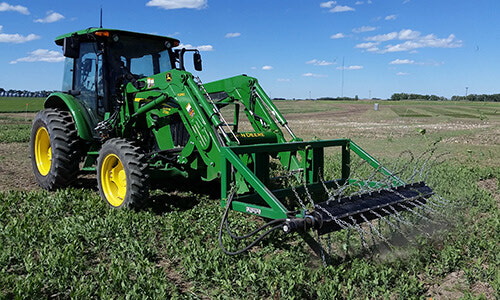Farming Smarter's three-year hail recovery research project suggests that insurance is the most reliable way to protect from crops loss due to hail damage.
"Generally speaking, right now hail insurance is your best return on investment in trying to help yourself recover from hail-damaged crops," said Ken Coles, Farming Smarter General Manager.
The project began in 2015 when a hail simulator was designed and created specifically for the trial.
The simulator was a rotating drum with long dog chains attached all the way around it.
Trials were done with the simulator before beginning the hail damage study to determine the accuracy of the dog chains on the crops.
Agriculture Financial Services Corporation (AFSC) adjusters checked the crops a week after simulated damage occurred and determined that it was very close to what actual hail would have done.
Once the trials began, a total of 27 different plots were included with simulated hail damage ranging from none to 67 per cent during different time periods over the season.
The crops included in the study covered canola, wheat and pulses over the three-year period.
Early in the study, it was discovered that the timing of the hail damage was a large factor in the recovery and total yield of the crops.
Sections that were damaged early in the season had more time to recover than those that experienced hail mid to late season which in turn produced a higher yield when harvested.
One of the main goals of the study was to determine the effectiveness of chemicals that are advertised for use on hail damaged crops.
"There are products out there being touted as hail rescue products," said Ken Coles, the project leader and General Manager of Farming Smarter.
Once the damage occurred, fungicides and nutrient blends were sprayed on different crops to determine if they would improve the yield when compared to untreated sections.
The end of the project determined fungicide treated crops did show a minimal improvement on overall yield, but the nutrient-enriched trials caused a drop in numbers when compared to the untreated crops.
Farming Smarter continues to study hail damage by comparing the yield of an early hail damaged crop to one that is reseeded afterwards.

